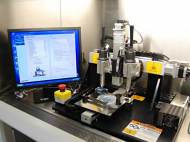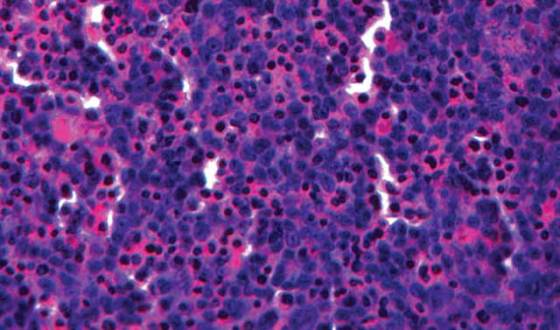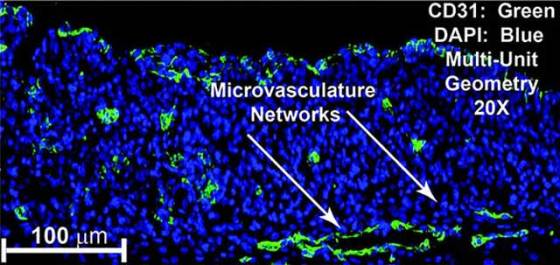Organovo creates fully cellular 3D bioprinted liver tissue
 As we reported in one of our previous articles, Organovo came up with a bio-printer able to print human tissue and organs in 3D. They recently attended 2013 Experimental Biology conference in Boston, Massachusetts, where they presented the company’s in vitro three-dimensional liver generated by Organovo’s NovoGen bioprinting platform. The tissues are highly reproducible and remained stable over time.
As we reported in one of our previous articles, Organovo came up with a bio-printer able to print human tissue and organs in 3D. They recently attended 2013 Experimental Biology conference in Boston, Massachusetts, where they presented the company’s in vitro three-dimensional liver generated by Organovo’s NovoGen bioprinting platform. The tissues are highly reproducible and remained stable over time.
“We have achieved excellent function in a fully cellular 3D human liver tissue. With Organovo’s 3D bioprinted liver tissues, we have demonstrated the power of bioprinting to create functional human tissue that replicates human biology better than what has come before”, said Keith Murphy, Chairman and Chief Executive Officer at Organovo. “Not only can these tissues be a first step towards larger 3D liver, laboratory tests with these samples have the potential to be game changing for medical research. We believe these models will prove superior in their ability to provide predictive data for drug discovery and development, better than animal models or current cell models.”
Beginning with hepatocytes (the predominant parenchymal cells of the liver), designs were created based on shapes and cellular interfaces found in native liver tissue. Generated human liver tissues are truly three-dimensional, and are up to 500 microns in thickness in the smallest dimension.
NovoGen Bioprinting platform enabled reproducible fabrication of architecturally and compositionally defined 3D tissues into standard tissue culture formats, using a wide array of cellular inputs, including primary human hepatocytes and hepatocyte-like cells derived from stem/progenitor sources.
“We’ve combined three key features that set our 3D tissues apart from 2D cell-culture models. First, the tissues are not a monolayer of cells; our tissues are approximately 20 cell layers thick. Second, the multi-cellular tissues closely reproduce the distinct cellular patterns found in native tissue”, said Dr. Sharon Presnell, Chief Technology Officer and Executive Vice President of Research and Development. “Finally, our tissues are highly cellular, comprised of cells and the proteins those cells produce, without dependence on biomaterials or scaffold for three-dimensionality. They actually look and feel like living tissues.”
Bioprinted 3D liver tissues exhibited tissue-like cellular density that remained stable over time. Generated 3D liver tissues possessed critical liver functions, including albumin production, fibrinogen and transferrin production, and inducible cytochrome P450 enzymatic activities, including CYP 1A2 and CYP 3A4.
Albumin production by 3D bioprinted liver tissues was 5-9 times greater than matched 2D controls, suggesting superior functionality. Cholesterol biosynthesis was also demonstrated for the first time in a multi-cellular 3D human liver system in vitro, suggesting utility in the study of interventional strategies aimed at regulation of cholesterol secretion.
Before celebrating potential liver replacement and going back to decadent lifestyle, you should know that the potential application of Organovo printed mini-liver is to be maintained in the laboratory environment for extended periods of time and sampled serially in order to enable functional and histological changes in response to injury, pathogens, or treatments. Once perfected and scaled-up, a similar approach might be used to create human-sized structures suitable for transplant.











Leave your response!